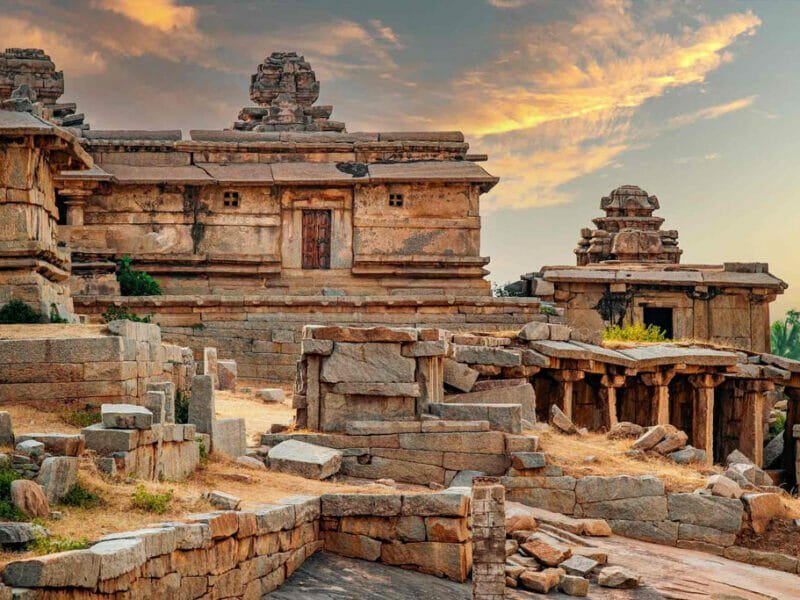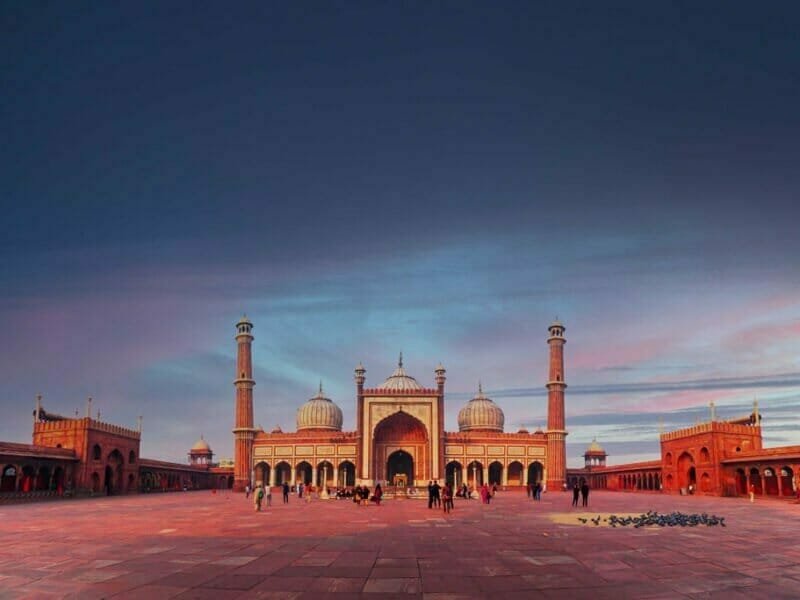Munnar
Munnar
A Paradise Amidst the Western Ghats
INTRODUCTION
Welcome to the picturesque hill station of Munnar, nestled in the lush greenery of Kerala’s Western Ghats. With its silvery coast, serene backwaters, and swaying coconut groves, Kerala is truly a gem in the southwest of India. Among its many treasures, Munnar stands out as a major tourist destination, offering a delightful escape into nature’s embrace. Let’s embark on a journey to uncover the beauty and charm of this enchanting paradise.
MUNNAR’S PRISTINE BEAUTY
Situated at an elevation of about 5,200 feet above sea level, Munnar offers a respite from the heat and hustle of city life. Once the favored summer resort for the British, this hill station still exudes an old-world charm. The rolling hills shrouded in mist, adorned with dark emerald green tea plantations, create an otherworldly landscape that will instantly captivate you. Amidst this verdant beauty lie a few lone houses, adding a touch of tranquility to the scenery, making Munnar a haven for honeymooners seeking romance and solace.
NATURE’S BOUNTY
Munnar is blessed with an abundance of natural wonders. Three rivers – Kundala, Nallathanni, and Madhura Puzha – converge here, giving rise to its name “Moonu Aaru,” meaning ‘three rivers’ in Malayalam. This convergence creates a refreshing break from the humid coastal climate of Kerala, gifting the region with soothing and pleasant weather throughout the year. The scenic valleys, virgin forests, and gushing waterfalls contribute to Munnar’s rich biodiversity, making it a sanctuary for flora and fauna.
MUNNAR’S TEA GARDENS
One of Munnar’s defining features is its vast tea plantations, which cascade down the slopes, covering the hills like a green carpet. The tea estates not only enhance the region’s beauty but also produce some of the finest tea in the country. Don’t miss the opportunity to visit the Kanan Devan Tea Museum, the first-ever tea museum in India, which showcases the history and growth of this beautiful district.
ANAMUDI: THE HIGHEST PEAK IN SOUTH INDIA
Nature’s grandeur is on full display in Munnar with Anamudi, the highest peak in South India, towering at an impressive 2,695 meters. This peak offers an incredible trekking experience, rewarding trekkers with breathtaking views of the surrounding landscapes. But Anamudi is not the only attraction; the Eravikulam National Park, home to the endangered Nilgiri Tahr, and the mesmerizing Neelakurinji flowers, which bloom once every twelve years, add to the area’s allure.
ADVENTURE AND WILDLIFE
Munnar is a paradise for adventure enthusiasts. From thrilling boating experiences to adrenaline-pumping trekking and paragliding, the region offers a range of activities to satisfy your adventurous spirit. For wildlife lovers, the Chinnar Wildlife Sanctuary, with its diverse flora and fauna, and Thattekkad Bird Sanctuary, home to numerous rare and endemic bird species, are must-visit destinations.
CHINNAR WILDLIFE SANCTUARY
Covering about 90 sq km, Chinnar Wildlife Sanctuary is located amidst the Western Ghats in Kerala. It boasts more than 965 species of flora and 580 species of fauna, including Indian elephants, langurs, Indian star tortoises, spotted deer, and panthers. The sanctuary is ideal for birdwatchers, with over 245 types of birds, including yellow-throated bulbuls. The region is also home to the Manjampatti white bison, a type of gaur known for its ash-grey color. Trek through the sanctuary to witness the magnificent Thoovanam waterfall and enjoy sweeping views from the watchtower.
KANAN DEVAN TEA MUSEUM
Located at Nullatanni Estate in Munnar, the Kanan Devan tea museum is the first-ever tea museum in the country. Delve into the growth and history of this beautiful district through fascinating exhibits. The museum showcases the original tea roller ‘Rotorvane’ dating back to 1905, and other interesting artifacts, including an iron-age burial urn from the 2nd century BC and the rail engine wheel from the Kundale Valley Light Railway. Learn about the modern tea production process and indulge in tea-tasting demonstrations.
ERAVIKULAM NATIONAL PARK
Spread over 97 sq km, Eravikulam National Park was established for the conservation of the endangered Nilgiri Tahr. The park is also home to other rare plants and animals like tigers, lion-tailed macaques, and Atlas moths. Embark on an unforgettable trekking experience and catch a glimpse of the captivating Neelakurinji flowers that bloom once every twelve years. The park remains closed from February to March for the Nilgiri Tahr breeding program.
THATTEKKAD BIRD SANCTUARY
Also known as the Salim Ali Bird Sanctuary, Thattekad Bird Sanctuary is Kerala’s first bird sanctuary and a haven for bird enthusiasts. Spread over 25 km, it is located on the north side of the Periyar River at the foot of the Western Ghats. The sanctuary is home to different types of birds, including rose-billed rollers, Ceylon frogmouths, Malabar grey hornbills, and parakeets. Explore the sanctuary through guided tours and trekking, but be mindful of restricted trekking areas.
RAJAMALA WILDLIFE SANCTUARY
Around 15 km away from Munnar, Rajamala Wildlife Sanctuary is a section of the Eravikulam Wildlife Sanctuary and a natural habitat for the endangered Nilgiri Tahr. Witness the fascinating wildlife, including gaurs, deer, elephants, panthers, and various bird species. The sanctuary offers enchanting views of the Rajmala Hills and is a great place for adventure lovers to indulge in rappelling rock climbing, and mountain trekking.
MATTUPETTY
Located at an elevation of 1,700 m in the district of Idukki, Mattupetty is a beautiful hill station known for its serene lake and dam. Enjoy boating and horse riding at Mattupetty Lake and visit the dairy farm, operated by the Indo-Swiss livestock project, to experience a taste of rural life.
PAMPADUM SHOLA NATIONAL PARK
Covering 11.75 sq km, Pampadum Shola National Park is the state’s smallest national park, a part of the Anamalai sub-cluster of the Nilgiri Biosphere Reserve. Home to the endangered Nilgiri marten, the park offers a rich biodiversity with 74 herb species, 22 species of trees, and 16 species of climbers. Trek through this lush landscape to witness its stunning beauty.
A GLIMPSE INTO THE PAST
As we explore the beauty of Munnar, let’s also take a step back in time to uncover its history. The Muthuvan tribal community was the early inhabitants of the region, and it remained unexplored and wild until the British Resident of Travancore, John Daniel Munro, developed it as a plantation town. The Kanan Devan hills, leased from the Poonjar royal family, became the perfect location for the tea plantations, laying the foundation for Munnar’s prominence today.
RELAX AND REJUVENATE
While the allure of adventure and exploration may be strong, Munnar also offers an idyllic setting for unwinding and rejuvenation. Immerse yourself in the tranquil and serene atmosphere, basking in the breathtaking natural beauty that surrounds you. Indulge in the practice of yoga and savor the delights of organic dining, allowing yourself to experience a truly holistic journey.
THINGS TO DO IN MUNNAR
- Explore the tea plantations on a bike to soak in the beauty of the valleys and hills.
- Engage in trout fishing at Sita Devi Lake for a fresh catch.
- Experience the thrill of rappelling, rock climbing, and mountain trekking.
- Enjoy a boat ride in the serene waters of Munnar’s lakes and reservoirs.
- Observe rare birds and animals in the Thattekad Bird Sanctuary and Chinnar Wildlife Sanctuary.
- Visit the Echo Point and scream your name to hear it reverberate through the hills.
- Take a guided tour to explore the rich flora and fauna of Eravikulam National Park.
PRACTICAL INFORMATION FOR TRAVELERS TO MUNNAR
1. Best Time to Visit: The best time to visit Munnar is during the months of September to May when the weather is pleasant and ideal for exploring the hill station.
2. Nearest Airport: The nearest airport to Munnar is Cochin International Airport, located about 110 km away. From the airport, you can hire a taxi or take a bus to reach Munnar.
3. Nearest Railway Station: The nearest railway station to Munnar is Aluva (Alwaye), which is around 110 km away. From the station, you can hire a taxi or take a bus to reach Munnar.
4. Local Transport: To explore Munnar and its surrounding areas, you can hire taxis, auto-rickshaws, and two-wheelers. Additionally, guided tours and trekking activities are available for sightseeing.
5. Accommodation: Munnar offers a wide range of accommodation options, including luxury resorts, mid-range hotels, budget guesthouses, and homestays. It is advisable to book your accommodation in advance, especially during the peak tourist season.
6. Currency and Payments: The official currency in Munnar is the Indian Rupee (INR). Most hotels, restaurants, and shops accept credit/debit cards, but it is recommended to carry some cash, especially when traveling to remote areas.
7. Language: The primary language spoken in Munnar is Malayalam. However, English is widely understood and spoken in tourist areas.
8. Local Cuisine: Munnar offers a variety of delicious dishes, including traditional Kerala cuisine and South Indian delicacies. Don’t miss trying local specialties like appam, puttu, idiyappam, and Kerala-style seafood.
9. Permits and Entry Fees: Some tourist attractions, such as wildlife sanctuaries, may require entry permits or fees. Make sure to check the entry requirements beforehand.
10. Weather: Munnar experiences a cool and pleasant climate throughout the year. Summers (March to May) are mild, with temperatures ranging from 19°C to 35°C. Monsoons (June to September) bring heavy rainfall, enhancing the scenic beauty. Winters (December to February) are cold, with temperatures dropping to 5°C in some areas. It’s advisable to carry warm clothing during this season.
11. Responsible Tourism: As a responsible traveler, respect the local culture and environment. Avoid littering, follow designated trekking paths, and refrain from disturbing wildlife.
12. Health and Safety: Munnar is a safe destination for travelers. However, it’s always advisable to take necessary precautions and stay hydrated, especially during outdoor activities.
13. Mobile Connectivity: Munnar has good mobile network coverage, but signal strength may vary in remote areas.
14. Emergency Contacts:
- Police: 100
- Ambulance: 108
- Fire: 101
15. Nearby Attractions: While in Munnar, don’t miss visiting nearby attractions like Devikulam Hills, Eravikulam National Park, Pothamedu Viewpoint, Mattupetty Dam, and Chinnar Wildlife Sanctuary.
16. Photography: Capture the beauty of Munnar with your camera, but always ask for permission before photographing locals or their property.
17. Eco-friendly Practices: Help in preserving the natural beauty of Munnar by refraining from plucking flowers or disturbing wildlife. Avoid using plastic bags and bottles, and opt for eco-friendly alternatives.
18. Medical Facilities: Munnar has medical facilities and pharmacies, but it’s advisable to carry basic first-aid supplies.
19. Souvenirs: Pick up souvenirs like tea, spices, handicrafts, and homemade chocolates to cherish memories of your trip to Munnar.
20. Enjoy the Serenity: Munnar is a place to relax and unwind. Take time to enjoy the serenity and rejuvenate amidst nature’s beauty.
Remember to plan your trip in advance, and carry essential items like sunscreen, comfortable footwear, and a camera to capture the picturesque landscapes of Munnar. Enjoy your stay and make unforgettable memories in this enchanting hill station of Kerala.
CONCLUSION
Munnar, with its ethereal beauty, abundant biodiversity, and profound historical significance, guarantees an unforgettable voyage into the heart of nature. Whether you are in search of thrilling escapades, a peaceful sanctuary, or a romantic retreat, Munnar caters to all your desires. Come and explore this paradise nestled amidst the majestic Western Ghats, and create cherished memories that will forever linger in your heart.




